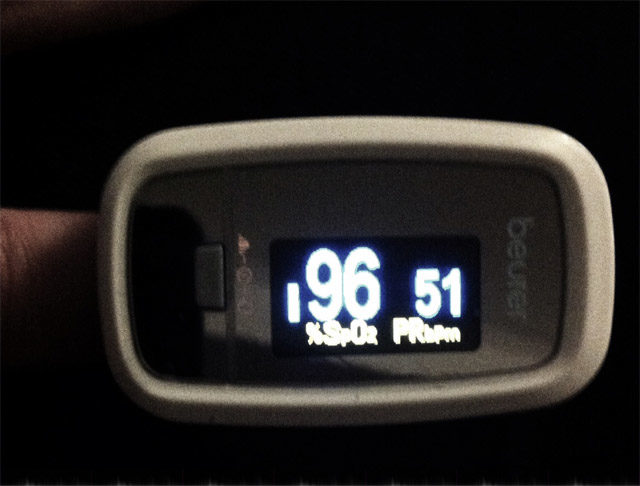When climbing Aconcagua, the organized medical checks are very thorough. It includes examining the lungs, respiratory functions, eyes and other parameters that might indicate any troubles with adapting to high altitude. If the results are too negative, you simply are not allowed to go further up the mountain. This is done regularly during the entire expedition. A very healthy institution if you ask me!
One thing you measure is the oxygen saturation in the blood. The most typical reason for measuring oxygen saturation is patient monitoring in hospitals (or elsewhere). At sea level a healthy/good oxygen saturation will be at around 95-99%. At 90-95% you might qualify for having hypoxia (low, or too low oxygen saturation = lack of oxygen). If you go as low as to 85-90%, the oxygen deficiency, after a while, can cause chronic or even life-threatening complications. (Although of course there are individual variations in percentages.)
At high altitude, it is very important to keep an eye on your oxygen saturation. At high altitude, however, sea-level rules no longer apply. At high altitude ”the crazy rules” apply. 🙂 (Read more at my page high altitude and altitude sickness) On the mountain, I can sometimes run as low as 70%. Very unhealthy. I promise you that you do not feel particularly strong in those moments. Because the controls on the mountain in Tibet and Nepal are not as organized you (I) would like them to be, it’s reassuring to be able to control those values myself!

You measure the oxygen saturation with a Pulse Oximeter. Even though I know pretty well where I am located in the acclimatization and oxygen saturation process, it is still nice and actually quite important to have ”real” control. In addition, I can, if I would find myself on a worryingly low number – take any measures to try to improve the levels. That could be eating and drinking more or better, rest or, at worst, medicate or go down. So it is certainly good to know.
Now, I am no longer dependent on the doctors’ visits, but instead can ”see for myself”) Yay!! A cheap (450 SEK) and good investment. In any cases at sea level my values are quite normal – 96% oxygen saturation (the small figure is the pulse).













